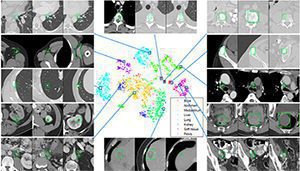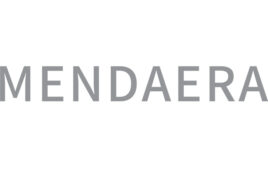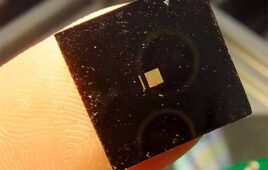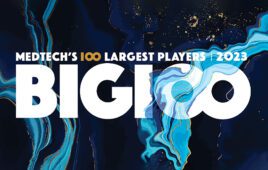
Visualization of the lesion embeddings on the DeepLesion test set. Colors indicate manually labeled lesion types. [Image courtesy of NIH]
Large enough to train a deep neural network, the DeepLesion database could enable the scientific community to create a large-scale universal lesion detector with one unified framework, according to an NIH statement. The proposed lesion detector achieves a sensitivity of 81.1% with five false positives per image, the researchers wrote in their study, published in the Journal of Medical Imaging.
DeepLesion contains 32,735 lesions in 32,120 CT slices from 10,594 studies of 4,427 unique, anonymized patients. It contains a variety of lesion types, including lung nodules, liver tumors and enlarged lymph nodes. Most publicly available medical image datasets have fewer than 1,000 images, according to NIH’s Clinical Center, where the research took place.
Scientists used radiologists’ electronic bookmarks of clinically meaningful findings to develop DeepLesion. The bookmarks are complex and full of retrospective medical data. They indicate radiologists’ measurements and markings, such as arrows, lines, diameters and text that indicate a lesion’s exact location and size so experts can identify growth or new disease.
Search engines that collect image labels cannot be applied to the medical image domain, because medical image annotations require extensive clinical experience, the agency said. The researchers’ process is scalable and requires minimum manual annotation effort. They hope others will be able to use the dataset to:
- Develop a universal lesion detector that will help radiologists find all types of lesions. It may open the possibility to serve as an initial screening tool and send its detection results to other specialist systems trained on certain types of lesions.
- Mine and study the relationship between different types of lesions. In DeepLesion, multiple findings are often marked in one CT exam image. Researchers are able to analyze their relationship to make new discoveries.
- More accurately and automatically measure sizes of all lesions a patient has, enabling the whole-body assessment of cancer burden.
The NIH Clinical Center hopes to collect more data for DeepLesion, extend it to other image modalities such as MRI, and combine data from multiple hospitals. The universal lesion detecting capability will become more reliable once researchers are able to leverage 3-D and lesion type information, researchers said.
Images are available via Box: https://nihcc.box.com/v/DeepLesion




